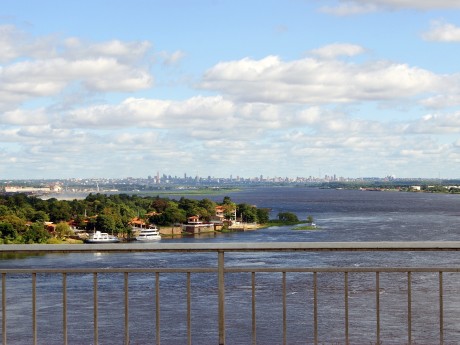Paraguay: Asunción, Ciudad del Este, Encarnación
Venture into the heart of Paraguay, where a mosaic of captivating experiences awaits. In Asunción, the capital city of Paraguay, history thrives amidst architectural splendors. Traverse cobbled streets to the Government Palace, then find solace in the Metropolitan Cathedral's elegance. Markets brim with artisanal treasures while the riverfront whispers tales of the Paraguay River's significance.
Read more
Venture into the heart of Paraguay, where a mosaic of captivating experiences awaits. In Asunción, the capital city of Paraguay, history thrives amidst architectural splendors. Traverse cobbled streets to the Government Palace, then find solace in the Metropolitan Cathedral's elegance. Markets brim with artisanal treasures while the riverfront whispers tales of the Paraguay River's significance. Cross to Ciudad del Este, a bustling trade hub, to explore vibrant bazaars and stand in awe of the colossal Itaipu Dam. Triple Frontier's cultural confluence beckons, a testament to global harmony. Explore the bustling Friendship Bridge, connecting Paraguay to Brazil, and the lively markets all around. Encarnación's spirit ignites with its exuberant Carnival and Jesuit ruins weaving narratives of antiquity. Alongside the Parana River, tranquility reigns at the serene beauty of the Costanera de Encarnacion, a lovely waterfront promenade perfect for relaxation. This expedition unveils Paraguay's soul, a harmonious blend of history, culture, and natural marvels. Waterviews strives to offer accommodation options within walking distance of water and/or in an area of touristic interest. Our prices include taxes (but excludes local tourist taxes). Customize your trip to your personal preferences with optional activities (hit the “Add Activities’’) or change hotels, etc. Contact us for customization at no extra cost at: Service@waterviewstravel.com
Destinations
- Asunción
- Ciudad del Este
- Encarnación
- Asunción
Itinerary
Asunción
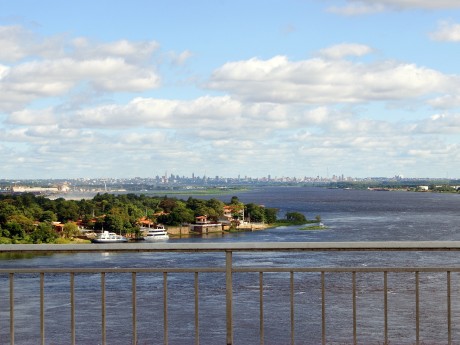
Asunción is the capital and largest city of Paraguay. Unlike other capitals of South America, Asunción is off the beaten path as it lacks well known tourist attractions. However, the number of visitors is on the rise and those who visit the Paraguayan capital will discover an authentic Latin American city which has managed to keep a quiet atmosphere and preserves interesting sights and monuments of its rich history and colonial past. Asunción is a thriving city with a rich cultural scene, vibrant nightlife and excellent hotels and restaurants.
Read more
Asunción is the capital and largest city of Paraguay. Unlike other capitals of South America, Asunción is off the beaten path as it lacks well known tourist attractions. However, the number of visitors is on the rise and those who visit the Paraguayan capital will discover an authentic Latin American city which has managed to keep a quiet atmosphere and preserves interesting sights and monuments of its rich history and colonial past. Asunción is a thriving city with a rich cultural scene, vibrant nightlife and excellent hotels and restaurants.
Additional Information
The Asunción metropolitan area is home to 2.2 million of Paraguay's 6.9 million inhabitants. It is a cosmopolitan and demographically young city with 65% of its residents under the age of 30.
Many landmarks and historical buildings in the old city centre have recovered their past splendour thanks to Paraguay's bicentennial independence celebrations that took place during 2011 and demanded a lot of restoration works throughout the city. In 2012, a new riverside promenade (costanera) was opened along the Bay of Asunción which added a much needed space for running, walking and family recreation. Around the city tree-lined avenues, small parks and shady squares break up the rigid grid system of streets in the downtown area. From July to September the whole city is drenched in colour with the prolific pink and yellow bloom of lapacho trees, which grow everywhere.
History
Asunción was founded in 1537 by Juan de Salazar y Espinosa, a Spaniard and member of the Pedro de Mendoza expedition which was set to colonize the Rio de la Plata basin, on 15th August the day of the feast of the Assumption of Mary, that is why is so named. It is the longest continually inhabited settlement in the Río de la Plata basin and in early colonial times it was referred to as Madre de Ciudades (mother of cities) because it was from here that numerous expeditions and missionaries set off to colonize the region founding many other settlements like Corrientes, Santa Fe, Buenos Aires and Santa Cruz de la Sierra. Asunción was established on the eastern bank of a calm bay in the river Paraguay, rendering it a good lookout post. In 1541 the first Cabildo (town council) was created transforming Asunción from a military fort to a civilian town with a local government.
The first president after independence, José Gaspar Rodríguez de Francia, who ruled Paraguay from 1814 to 1840, began to put some town planning. Under his successor, Carlos Antonio López, the railway was inaugurated, and some of the handsome 19th century buildings went up. The following president, Mariscal Francisco Solano López, in the short period before he embarked on his catastrophic War of the Triple Alliance, built the grandest of the city's buildings, his own residence, known today as the Palacio de López. The city centre is an old testament to 19th century historic ideals, with names reflecting local heroes and battles. During the Chaco War against Bolivia of 1932-35 many buildings in the city were improvised as hospitals and military barracks.
Since the 1970-80s internal migration from the countryside to Asunción has made the city to increase in size and population until becoming one continuous urban spread comprising more than a dozen different cities that form the Greater Asunción metro area. The most interesting for tourists to visit are Luque, San Lorenzo, Capiatá, Itauguá and Villa Hayes among others.
Present day
Today Asunción is a bustling, chaotic city with some 600,000 inhabitants within its city limits, and around 2.5 million people in its metro area. However, behind the new tall glassy buildings, corporate headquarters and shopping malls, Asunción retains a laid back atmosphere. When visiting the city a mix of three different architectural styles will be present: colonial style (present in the oldest houses and buildings of the city centre); italianate public buildings and manors (with beautiful gardens) and modern Latin American architecture (including a large shopping malls next to residential houses).
Tourism has become important for Asunción and it is specially visible in the Business District and Villa Morra neighbourhoods where economic growth has resulted in a plethora of new hotels and shops, as well as innovative new bars and restaurants. The majority of visitors are businessmen of neighboring Latin American countries and day trippers from Argentina. They come to enjoy low prices on practically all goods and services from restaurant meals to electronics and even car tyres.
Visitor information
Climate
Asunción is just south of the Tropic of Capricorn so the climate is subtropical. That means hot weather especially in the South American summer (winter in the Northern Hemisphere). Between November and March the temperature can consistently climb over 38 °C (100 °F) and the humidity can be high and uncomfortable. Nevertheless, the weather changes frequently from one week to another. When the sun shines you bake and it can be very dry when the rains hold off for just a few days. Rains can be heavy and make the temperature drop precipitously. Then the clouds build and it becomes cold.
Talk
The city, as the whole country, is officially bilingual, with 79% of people speak Spanish as their first language, and 20% have Guaraní as their first tongue. English is not widely spoken outside of hotels and tour operators so without some basic Spanish phrases it might be hard to get by. Public transportation, street signs and all road signalization are in Spanish. Business people and the younger generations have some knowlegde of English. Although locals will appreciate an effort to say a few words in Spanish, they will try to communicate in English if they can. The majority of restaurants have Spanish-only menus and waiters seldom speak other language than Spanish or Guaraní.
© Sourced from Wikivoyage
Ciudad del Este
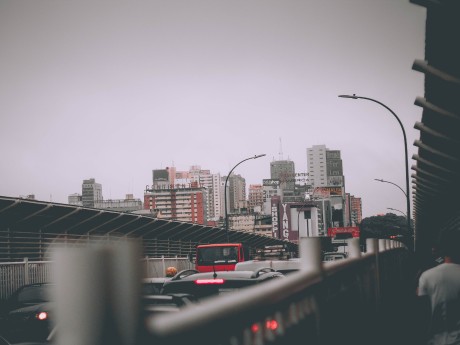
Ciudad del Este is the most eastern and second largest city of Paraguay, situated at the country’s border with Brazil and Argentina. The city is best known for its shops, malls and department stores, and also serves as a base for those looking to visit the region's natural highlights such as the nearby Iguazu Falls, Monday Falls and the Itaipu Dam.
Read more
Ciudad del Este is the most eastern and second largest city of Paraguay, situated at the country’s border with Brazil and Argentina. The city is best known for its shops, malls and department stores, and also serves as a base for those looking to visit the region's natural highlights such as the nearby Iguazu Falls, Monday Falls and the Itaipu Dam.
Additional Information
In the city center, a myriad of shopping malls, arcades and department stores offer imported goods of luxury brands at unbeatable prices, making thousands of tourist-buyers coming during the day while the shops are open only to return home in the afternoon with the shopping bags full of bought merchandize.
This place is one of the access points to a great natural wonder of the world, the Iguaçu Falls, a few kilometers nearby in the neighboring cities of Foz do Iguaçu and Puerto Iguazu. Also very close is a unique feature rarely seen around the world, a tri-nation viewpoint where the borders of Paraguay, Brazil and Argentina meet at the mouth of the Iguazú river into the Paraná river. Other interesting sights to see around Ciudad del Este are the Itaipú hydroelectric dam, the second largest in the world, the Monday river waterfall, as well as some interesting museums and nature reserves of the Atlantic Forest of South America.
Ciudad del Este metro area has a population of 575,000 inhabitants which includes the districts of Presidente Franco, Hernandarias and Minga Guazú. It is the capital of Alto Paraná Department and is known as ciudad jardín (garden city) for its numerous parks and green areas.
History
Ciudad del Este was founded in the mid 20th century, in 1957, with the name Ciudad Presidente Stroessner as a tribute to the dictator ruling Paraguay at the time, General Alfredo Stroessner. The city name was changed in 1989 after the fall of the Stroessner regime by the current Ciudad del Este *(city of the east)* because of its location at the eastern border of Paraguay with Brazil.
In the beginnings there were only an airstrip, two main avenues and the foundation stone for the church. Subsequently, the city started to grow steadily, first with the opening in 1968 of an international bridge to Brazil over the Paraná river, then since 1973 with the construction of the Itaipú hydroelectric dam, which meant that thousands of engineers and construction workers moved with their families to live over here. Large subdivisions and new neighbourhoods were built and the city became a mecca for anyone in Paraguay with entrepreneurship.
But the most significant key element in the transformation of Ciudad del Este to a major city has been the inter-border commercial trade with Brazil, a giant economy with a huge internal consumer market heavily tax burdened. Local businessmen, mostly from the Middle East and China, saw this as an opportunity and convinced Paraguayan authorities to tax-free almost all of the imported goods so creating a significant price difference between Paraguay and Brazil. This situation has made Ciudad del Este the main shopping destination for thousands of Brazilians who come lured by the chance to buy low-priced electronics, clothing, household appliances and many other items that can get to cost up to 80% cheaper than if they were bought in Brazil. The development of this kind of commercial activity has been of such magnitude that Forbes magazine once mentioned Ciudad del Este as the third most important shopping destination in the world after Hong Kong and Miami. This phenomena has caused that the largest shopping malls and department stores of Paraguay are found in the downtown of Ciudad del Este.
Economy
Local economy depends to a large extent on the border trade between Paraguay and Brazil, although a large part of it is considered smuggling by the Brazilian government. This is due to the activity of sacoleiros (Brazilian tourist shoppers) who cross the border to buy products in Ciudad del Este that then are resold in Sao Paulo and all along southern Brazil. The issue is that according to Brazilian import regulations the purchase of items by Brazilians travelling abroad must be "for personal use only" and up to a monthly limit of US$ 300 per person. However, the sacoleiros, from the Portuguese word sacola (bag), do this every day, so creating a very lucrative business of buying low-priced products in Paraguay and then reselling them in Brazil (up to 50%-80% more expensive). This business flow produces hundreds of millions of dollars and has allowed large stores and shopping centers in Ciudad del Este to be built very close to the border so that tourists do not have to walk more than 500 meters into Paraguayan territory to buy products and take them back to Brazil.
Another significant aspect of Ciudad del Este's economy is the agribusiness sector, with soya in particular. The soil in the Alto Paraná region is one of the most fertile in the world, so it has fostered the establishment of large soya plantations throughout the Eastern region of Paraguay which has led to a large economic development with the sale of agricultural machinery, fertilizers, the construction of large grain storage silos, as well as all the logistics for hundreds of trucks used in the transport of soybeans to seaports in the Brazilian Atlantic coast.
Talk
Ciudad del Este is a bilingual community. Spanish and Portuguese are spoken side by side. Also there is a large Arab and Asian community, which run most of the local shops, so Arabic and Chinese is normally heard when you walk along the shopping arcades throughout the downtown area. English is spoken only in hotels and travel agencies.
© Sourced from Wikivoyage
Encarnación
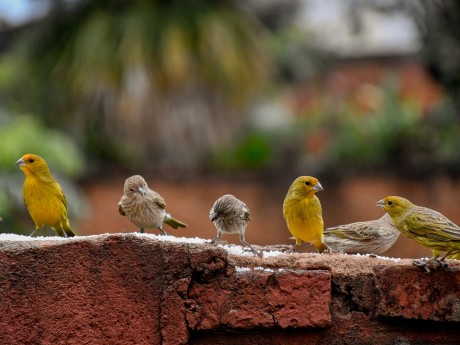
Also known as the ‘Pearl of the South’ due to its location in southern Paraguay, on the north bank of the Paraná River on the country’s border with Argentina, Encarnación is a charming city that offers a variety of attractions. Be sure to visit the nearby UNESCO-listed Jesuit ruins, and take advantage of the city's excellent shopping and dining opportunities.
Read more
Also known as the ‘Pearl of the South’ due to its location in southern Paraguay, on the north bank of the Paraná River on the country’s border with Argentina, Encarnación is a charming city that offers a variety of attractions. Be sure to visit the nearby UNESCO-listed Jesuit ruins, and take advantage of the city's excellent shopping and dining opportunities.
Additional Information
Encarnación is a short jaunt on a local bus across the river from Posadas, Argentina. A shopping destination for many Argentines availing themselves of the lower taxes and prices, Encarnación is a pleasant, modern and relaxed city. The nearby Jesuit Missions of La Santisima Trinidad de Parana and Jesus de Tavarangue near Encarnación are on the UNESCO World Heritage List.
© Sourced from Wikivoyage
Asunción
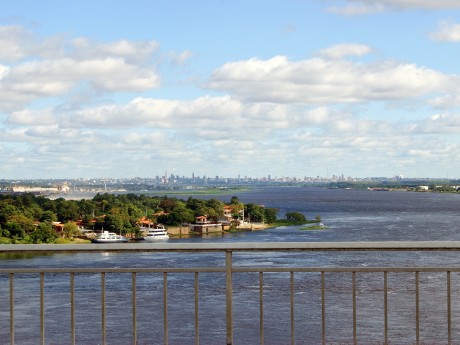
Asunción is the capital and largest city of Paraguay. Unlike other capitals of South America, Asunción is off the beaten path as it lacks well known tourist attractions. However, the number of visitors is on the rise and those who visit the Paraguayan capital will discover an authentic Latin American city which has managed to keep a quiet atmosphere and preserves interesting sights and monuments of its rich history and colonial past. Asunción is a thriving city with a rich cultural scene, vibrant nightlife and excellent hotels and restaurants.
Read more
Asunción is the capital and largest city of Paraguay. Unlike other capitals of South America, Asunción is off the beaten path as it lacks well known tourist attractions. However, the number of visitors is on the rise and those who visit the Paraguayan capital will discover an authentic Latin American city which has managed to keep a quiet atmosphere and preserves interesting sights and monuments of its rich history and colonial past. Asunción is a thriving city with a rich cultural scene, vibrant nightlife and excellent hotels and restaurants.
Additional Information
The Asunción metropolitan area is home to 2.2 million of Paraguay's 6.9 million inhabitants. It is a cosmopolitan and demographically young city with 65% of its residents under the age of 30.
Many landmarks and historical buildings in the old city centre have recovered their past splendour thanks to Paraguay's bicentennial independence celebrations that took place during 2011 and demanded a lot of restoration works throughout the city. In 2012, a new riverside promenade (costanera) was opened along the Bay of Asunción which added a much needed space for running, walking and family recreation. Around the city tree-lined avenues, small parks and shady squares break up the rigid grid system of streets in the downtown area. From July to September the whole city is drenched in colour with the prolific pink and yellow bloom of lapacho trees, which grow everywhere.
History
Asunción was founded in 1537 by Juan de Salazar y Espinosa, a Spaniard and member of the Pedro de Mendoza expedition which was set to colonize the Rio de la Plata basin, on 15th August the day of the feast of the Assumption of Mary, that is why is so named. It is the longest continually inhabited settlement in the Río de la Plata basin and in early colonial times it was referred to as Madre de Ciudades (mother of cities) because it was from here that numerous expeditions and missionaries set off to colonize the region founding many other settlements like Corrientes, Santa Fe, Buenos Aires and Santa Cruz de la Sierra. Asunción was established on the eastern bank of a calm bay in the river Paraguay, rendering it a good lookout post. In 1541 the first Cabildo (town council) was created transforming Asunción from a military fort to a civilian town with a local government.
The first president after independence, José Gaspar Rodríguez de Francia, who ruled Paraguay from 1814 to 1840, began to put some town planning. Under his successor, Carlos Antonio López, the railway was inaugurated, and some of the handsome 19th century buildings went up. The following president, Mariscal Francisco Solano López, in the short period before he embarked on his catastrophic War of the Triple Alliance, built the grandest of the city's buildings, his own residence, known today as the Palacio de López. The city centre is an old testament to 19th century historic ideals, with names reflecting local heroes and battles. During the Chaco War against Bolivia of 1932-35 many buildings in the city were improvised as hospitals and military barracks.
Since the 1970-80s internal migration from the countryside to Asunción has made the city to increase in size and population until becoming one continuous urban spread comprising more than a dozen different cities that form the Greater Asunción metro area. The most interesting for tourists to visit are Luque, San Lorenzo, Capiatá, Itauguá and Villa Hayes among others.
Present day
Today Asunción is a bustling, chaotic city with some 600,000 inhabitants within its city limits, and around 2.5 million people in its metro area. However, behind the new tall glassy buildings, corporate headquarters and shopping malls, Asunción retains a laid back atmosphere. When visiting the city a mix of three different architectural styles will be present: colonial style (present in the oldest houses and buildings of the city centre); italianate public buildings and manors (with beautiful gardens) and modern Latin American architecture (including a large shopping malls next to residential houses).
Tourism has become important for Asunción and it is specially visible in the Business District and Villa Morra neighbourhoods where economic growth has resulted in a plethora of new hotels and shops, as well as innovative new bars and restaurants. The majority of visitors are businessmen of neighboring Latin American countries and day trippers from Argentina. They come to enjoy low prices on practically all goods and services from restaurant meals to electronics and even car tyres.
Visitor information
Climate
Asunción is just south of the Tropic of Capricorn so the climate is subtropical. That means hot weather especially in the South American summer (winter in the Northern Hemisphere). Between November and March the temperature can consistently climb over 38 °C (100 °F) and the humidity can be high and uncomfortable. Nevertheless, the weather changes frequently from one week to another. When the sun shines you bake and it can be very dry when the rains hold off for just a few days. Rains can be heavy and make the temperature drop precipitously. Then the clouds build and it becomes cold.
Talk
The city, as the whole country, is officially bilingual, with 79% of people speak Spanish as their first language, and 20% have Guaraní as their first tongue. English is not widely spoken outside of hotels and tour operators so without some basic Spanish phrases it might be hard to get by. Public transportation, street signs and all road signalization are in Spanish. Business people and the younger generations have some knowlegde of English. Although locals will appreciate an effort to say a few words in Spanish, they will try to communicate in English if they can. The majority of restaurants have Spanish-only menus and waiters seldom speak other language than Spanish or Guaraní.
© Sourced from Wikivoyage




